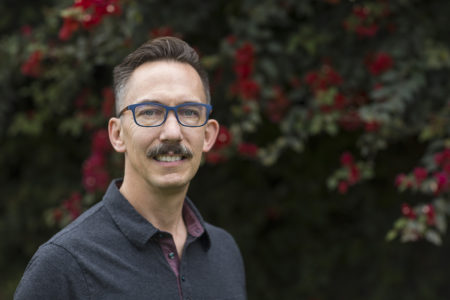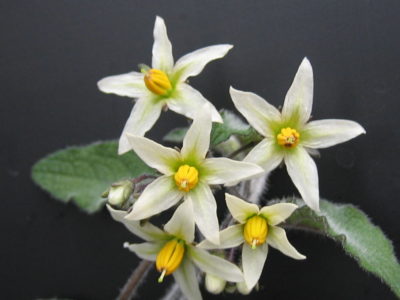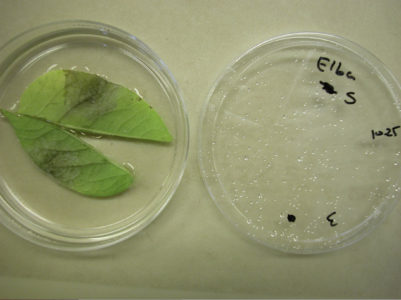
Dr. Jim Bradeen is a plant genomicist who mines the genetic diversity found in crop wild relatives. Head of the University of Minnesota Plant Pathology Department, Bradeen studies the genomics of disease resistance with a focus on potato late blight, the disease responsible for the Irish potato famine in the 19th century, which costs potato famers billions of dollars globally each year. He shares insights on the role of crop wild relatives in tackling the challenges of achieving global food security in the face of climate change and population growth.

What is the difference between a cultivated potato and a crop wild relative?
Our crop plants such as potato really have been adapted to human needs. For example, we focus on nutritional quality or yield or culinary attributes. Many of the crop wild relatives lack some of those traits but are rich sources of other genetic diversity. Wild species have co-evolved with changing diseases and environmental stresses. As a collective, they offer rich genetic diversity that can be mined for cultivated crops.
Why is it important to study the evolutionary history of crop wild relatives? How does this apply to a crop like potato?
The evolutionary history of any group of plants tells us something about the way that those plants function. For the potato late blight system, some of the crop wild relatives have been dealing with Phytophthora infestans for thousands of years, for millions of years in some cases. Understanding evolutionary history, understanding and leveraging the wild species that have existed in native environments alongside the pathogens for a long period of time gives us new strategies, new insights on how to manage this disease in a cultivated potato background in an agricultural setting.
As the world population grows and our resources become more and more constrained, could the use of crop wild relatives help feed the 9 billion people who are expected to populate the Earth in 2050.?
Understanding the genetic diversity found in crop wild relatives is important in helping our plants adapt. Much of agriculture as we’ve known it over the last 10,000 years has happened in an environment that was largely stable. As the global climate changes and our crop plants face new challenges from pests and diseases, we need genetic variation that will improve the adaptability and resilience of the potato crop. Wild species are genetic treasure troves of diversity. I’m interested in particular in disease resistance, but crop wild relatives could also help adapt to changing environmental challenges like drought or flooding.

Can you explain a little bit about how the late blight resistance found in crop wild relative can be transferred into a domesticated potato variety?
Some of the wild potato species can be directly crossed with potato. Transferring traits like disease resistance can be done with a traditional breeding approach. We also have molecular approaches these days that allow us to clone genes from wild species and transfer that particular gene into a cultivated potato background. There are new technologies for gene-editing that allow us to understand the genetic diversity of alleles, disease resistance alleles in wild species, and then edit existing alleles in the potato genome as well, so that they look like the wild species. We have a rich toolbox of methods to transfer genes between crop wild relatives and crop potato plants.
How does your research benefit smallholder farmers?
The focus of our research, the focus of plant pathology research in general, is about changing the lives of farmers and making our science accessible to crop improvement. The work that we do in the genomics of disease resistance, late blight resistance of potato crop wild relatives for example, has the end goal of improving disease resistance in domesticated varieties and subsequently reducing the need for chemical inputs for potato production worldwide.
What role do you think the International Potato Center (CIP) plays in this?
CIP has been at the forefront of potato improvement for a long time. I had the pleasure of touring the CIP genebank and was amazed by the genetic diversity it houses. Those resources are made available worldwide to researchers and breeders for advancing the potato crop. The genebank is an incredibly valuable resource for the scientific community and the world at large.
